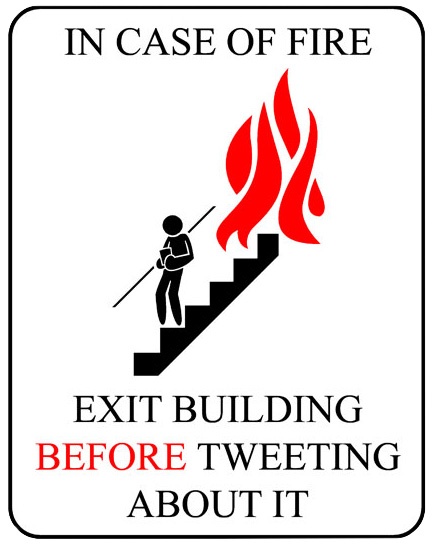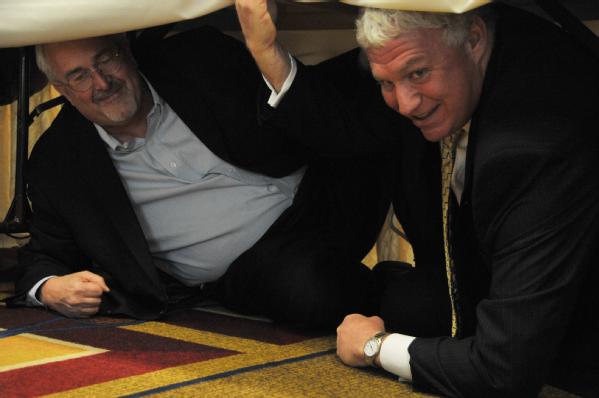What We're Watching: 10/19/12
At the end of each week, we post a "What We’re Watching" blog as we look ahead to the weekend and recap events from the week. We encourage you to share it with your friends and family, and have a safe weekend.
A whole lot of shaking going on
No, the headline above isn’t referencing a big dance party…it’s talking about earthquake safety! Yesterday, millions around the U.S. practiced earthquake safety as part of the Great ShakeOut drill. Participants practiced how to “Drop. Cover. Hold On.” – the three simple steps to stay safe during an earthquake. Our own Administrator Craig Fugate participated in the drill (see photo below), and so did thousands of other organizations across the country. Our blog has featured some great perspectives on earthquake safety over the past week leading up to the ShakeOut drill, so check out these posts in case you missed them:
- Practicing Safety and “Shaking Out”
Craig Fugate, FEMA Administrator - Workplace Preparedness and the Great ShakeOut
Paulette Aniskoff, Director, Individual and Community Preparedness Division - We Must be Prepared. Even for Earthquakes.
Buddy Harris, North Carolina Central University - ShakeOut and my school
Gabriela Rodriguez, FEMA Youth Preparedness Council - North Carolinians Get Ready to Drop, Cover, and Hold On
Doug Hoell, Director, North Carolina Emergency Management - “Go One Step Further” and the Great ShakeOut
Bob Boyd, Chief Executive Officer, Agility Recovery Solutions - South Carolina’s Faults due for a ShakeOut
Derrec Becker, South Carolina Emergency Management Division
Fire safety in for social media users
Earlier in October we observed Fire Prevention Week – with a focus on getting people to practice a home fire drill with their family. For those that frequently use social media (or have children that do), this sign might be an appropriate reminder of the sequence of steps to follow if a fire should occur:

Image courtesy of the Red Cross Chat blog.
Hurricane season down, but not out
As we approach the final days of October, the peak time for tropical storm and hurricane activity in the Atlantic is behind us. However, last week’s Hurricane Rafael gave all of us a reminder that tropical systems can develop quickly even though the peak of the season has passed. The Atlantic hurricane season lasts until November 30, so take time now to make sure your home, business, and family are prepared if you live in a coastal or inland area. As we saw with Hurricane Isaac earlier this year, these storms often cause a significant amount of rainfall and flooding is typically their most dangerous and damaging effect. Ready.gov/hurricanes (or m.fema.gov on your phone) is a great place to learn how to get prepared as we enter the “home stretch” of this year’s hurricane season.
New Features to Our Website
Since we launched our new website back in July, we’ve received user feedback from people all over the country. Well, we just made a series of improvements to the site, incorporating some of the responses and requests you shared with us.
We’ve launched a new search engine that’s better integrated with all the content that FEMA.gov has to offer. Search results are now much more accurate and include recommended pages, news releases, agency tweets and agency videos all on the main results page. You also now have the ability to filter your results by blog post, news, disaster declaration, documents, videos, photos, and images.
We’ve also added the ability to view Disaster Declarations by state and by year. A popular feature on the old website, users can now browse the declarations using a table format and easily see how many disaster declarations were issued by state or year and then filter by disaster type.
We appreciate all of the feedback we received and hope you all will find these new enhancements to be user friendly and beneficial when your browsing our site.
Let us know what you think of these new features by leaving a comment below.
Have a great weekend, and stay safe.



